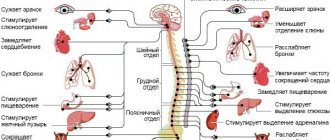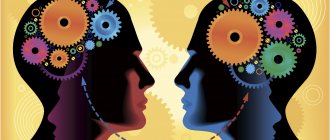Who are visuals?
Visual perception plays a big role in our lives.
It helps to understand the surrounding reality and interact with other people. It is so natural for a person to see the outside world that many people do not even think about the enormous importance of this channel of perception. Understanding how a visual person perceives information opens up great opportunities for closer interaction with customers. Psychologist Richard Gregory argues that human visual perception proceeds “from top to bottom,” that is, from the general to the specific. Visuals form their picture of perception, moving from large details to smaller elements. This allows them to make good guesses about what they see. In other words, every visual person in the store is making calculated guesses. If he liked the product at first sight, he will try to examine it in detail to make sure that his eyes did not deceive him and that the product corresponds to his expectations and level of past experience.
How it can be used
Working with visuals is very easy
It doesn’t matter what the business segment is - knowing how a visual person perceives reality will help present a product or service to him in the most favorable light. A beautifully designed showcase, correctly placed goods on the shelves, an elegant office interior - and the visuals are captivated. A beautiful picture means a lot to him
A beautiful picture means a lot to him.
But don't deceive visual learners. Even a small flaw will not go unnoticed. Any product for people with a visual type of perception must have a first-class design and impeccable appearance.
Which type of perception is more developed in you?
This theory is based on the study of the influence of neurolinguistic programming on the human psyche. Each of us contacts the world around us in a special way and perceives it in our own way. A person reproduces and processes received signals depending on the senses he uses for this. This is related to the way of thinking, behavior, ability to learn and remember.
Your individuality is manifested in which of the methods of perception you use.
There are people who only have one channel that is really well developed, but more often two or more predominate. In addition, personality also depends on the hemispheric dominant. Some people have a more developed left hemisphere of the brain - such people use logic more often and strive for order.
On the other hand, those with a dominant right hemisphere approach everything creatively and are more inclined to innovation and flexibility. Neurolinguistic psychology explains how we see the outside world.
Do you want to know yourself better and determine your personality type depending on the way you perceive? We will tell you the difference between visual, kinesthetic and auditory learners.
Type of perception: visual
Are you one of those who require maximum silence when reading? This is very common among visual people: they need silence in order to fully concentrate. They may listen to music while driving, but when they need to find a specific street or be more alert to traffic, they turn down the volume or turn it off completely.
They are energetic and very, very observant people. They evaluate every aspect of a subject and do not miss the slightest detail. They find it easier to remember new things through pictures or by taking notes. They receive most of their information using vision. For relaxation, they often choose parks or forests. And silence.
Type of perception: auditory
Do you often raise your tone and express your thoughts loudly? This may seem like a strange habit to others, but it’s just a matter of the type of perception. In fact, there are a lot of people who verbalize their thoughts, talk to themselves and like to “talk it out”. If you are an auditory person, you also like to listen to other people and remember information better when heard than when written.
Auditory learners are expressive and very sociable by nature. They know how to express their ideas and listen to others. They are not disturbed by extraneous noise, they can carry on a conversation with loud music. Auditory learners are able to do several things at once, unlike visual learners who find it difficult to complete tasks if they are distracted by the external environment.
Type of perception: kinesthetic
Do you like touch? Are you good at cooking or doing things with your own hands? Work outdoors? Would you like to have a garden, grow flowers and take care of plants? Maybe you play sports? If you answered yes to most questions, you are a kinesthetic learner.
NLP (neurolinguistic programming) claims that despite the fact that kinesthetics are quite calm, they assign a large role to the emotional component, especially physical and tactile contact. This group includes people who are eager to try before getting information from someone. Notably, they express their thoughts and feelings through hugs, touches, and food. They don't pay as much attention to their surroundings as visual learners. Such people are usually more spontaneous and less focused and attentive.
In conclusion, let us add that it is possible that each type of perception manifests itself in you in different proportions. This is normal, but you can still find more common ground with a particular group. Visual learners, for example, are usually more relaxed than auditory and kinesthetic learners. The latter, in turn, are more active and excited.
Of course, each of us contains traits of all three types in one way or another, but NLP allows us to consider the prism through which we see the surrounding reality. And how a person perceives it is closely related to personality and character: one can be calmer or nervous, thoughtful or reckless, sociable or detached, an active participant or an outside observer. Our way of acting and expressing emotions depends on the senses and the joy of seeing, hearing, touching, tasting and speaking...
How do you interact with the outside world? Who are you: visual, auditory or kinesthetic?
Who are you: rational or intuitive?
We will offer several ways for you to describe yourself. Who are you: rational or intuitive? What socionic type? Read more "
What is a type of perception in psychology
The type of information perception is a feature of the formation of ideas, which consists in the individual work of the mental processes involved in perception.
Depending on the modality, there are:
- kinetic perception, which is based on sensation and movement;
- auditory perception is perception based on hearing;
- visual perception, which is based on vision.
Additional Information. The type of perception is determined by the goal and motivational attitudes of the individual.
Audials
For auditory learners, the perception of various sounds is primary. This group of people includes those who most accurately perceive information by ear and makes up about 60% of all humanity. They easily grasp the meaning of phrases and texts spoken out loud and without visual accompaniment. However, auditory learners have difficulty perceiving and remembering faces and objects, in contrast to the sounds and voices of people - it will be enough to hear a sound once and it will “settle” in the auditory learner’s memory for a long time. We can say that such individuals live in a world of melodies, rhythms and sounds.
Often, auditory learners are characterized by vivid and emotional speech. They incredibly “come to life” when talking, their speech is filled with many sounds in the form of exclamations, sometimes they almost turn to screaming. And all because the voice of a person of this type is, as a rule, very loud, ringing and melodic.
Under no circumstances should you interrupt the audio speaker’s monologue, otherwise he may become silent and no longer enter into conversation with the person who interrupted him. When entering into a dialogue with an interlocutor, auditory learners are at a close distance from him in order to accurately grasp the speaker’s intonation.
Often in their conversation they use words such as “quiet”, “sound”, “loud”, “shout”, “listen”, etc. It is also common for auditory learners to use phrases such as:
- “listen to what I say”;
- "I'm glad to hear you";
- “This sound annoys me”;
- “sounds tempting”;
- “what does this mysterious tone mean”;
- “your idea sounds great.”
Auditory learners enjoy listening to music and enjoy singing, even if they are just humming something out loud. Therefore, a person of this type chooses the profession of a composer, musician, psychologist or lecturer.
From the editor: What remedies are really useful for VSD
Even before entering into a conversation with an auditory person, you can recognize him by his external signs. For example, this person always sits straight, stretching his neck and slightly leaning his body forward - this is his perception; it is easier for him to grasp information through the sounds reaching him in the smallest detail. Audials have a well-developed chest, and their breathing is even and deep.
At first glance, it may seem that such a person is somewhat arrogant and stubborn, but in fact, auditory people are very good-natured, always open to conversation and able to empathize. They will not only tell you completely sincerely how they are doing, but they will also be happy to inquire about the life of their interlocutor and listen to his story. It is not typical for auditory learners to look into the eyes of their interlocutor, since for them this causes tension and often distracts from the idea that needs to be conveyed or from the perception of the other person. And, of course, auditory learners love with their ears.
Visual, auditory, kinaesthetic, digital in communication
Visuals
“You meet people by their clothes...” the beginning of this famous proverb applies entirely to visual people. They attach significant importance to a person’s appearance and always pay attention to how a person looks, what clothes he is wearing, what facial features he has, how he moves.
When communicating, they can look into the eyes calmly and for a long time. Visual contact, inverted posture in communication, open postures are extremely important for the visual person. At the same time, they do not like to be close to their interlocutor and keep their distance. The main thing is to see well. Representatives of this type of perception quickly intuitively read the signals of body language and facial expressions, often without noticing it. Sometimes it seems to them that just by looking at them they know the thoughts of another person.
Read the article on nonverbal communication
If you need to impress a visual person, try to pay the most attention to external beauty. The environment, your clothes, gait, facial expressions, and gestures should be as inviting as possible. To prove your words, provide clear examples, graphs, drawings, and be sure to demonstrate your arguments using samples and experiments. Show a picture instead of numbers: visual learners will have difficulty understanding the difference between 1000 and 10,000, but a visual example of the difference will convince them in most cases.
Visual artists themselves are good storytellers. They can imagine amazingly vivid and detailed pictures and talk about them for hours.
Audial
A conversation with an auditory student is often very pleasant. Auditory learners themselves are demanding of their speech; they speak measuredly, with competent changes in intonation. It’s nice to listen to them, it’s nice to talk to the auditory. But auditory learners themselves are very demanding of the speech of their interlocutors; they cannot tolerate errors in speech, incomprehensible and distorted speech. It is absolutely forbidden to shout or raise your voice at auditory learners; this will lead to alienation of the person. Audials are always a pleasure to listen to; they are wonderful storytellers and no less wonderful interlocutors, who can understand at a glance by their intonation and manner of speech.
Kinesthetic
Kinesthetic learners are especially sensitive to spatial surroundings and distances between interlocutors. Close people are allowed into the personal zone, but people they don’t know well are kept at a distance. For kinesthetes, an invasion of their personal zone is offensive, and they begin to experience strong negative emotions. It is best to gain the attention and trust of the kinaesthetic through actions, joint affairs, and common activities.
If you have to remember something, it is better to write it or draw it yourself. Conversations and verbal evidence will make the least impression on a person of this type of perception. And the kinaesthetic always strives to touch and stroke close people. Physical contact is important to him.
Digital
They are insensitive in communication and rarely show emotions in public. Particular attention is paid to the semantic, substantive part of the conversation. Beautiful but empty speech is unpleasant to them. With digital, it is best to get to the point in a conversation, proving the logic and correctness of your words with numbers and facts.
History of the study
Surprisingly, the study of proprioception began two hundred years ago. In 1826, neurologist Charles Bel wondered what other functions muscles had other than contracting at the command of motor neurons. He came to the conclusion that they also “tell” the brain about the position of the body and limbs, if there is no other way to know about it (for example, if you cannot see your hands).
In 1887, neurologist Henry Charlton Bastian proposed replacing the term "kinesthesia" with the general terms "muscle sense" and "pressure sense." According to Bastian, kinesthesia is the perception of body and limb movements in space, the degree of effort and weight applied.
Almost twenty years later, in 1906, neurophysiologist Charles Scott Sherrington separated the terms “proprioception,” “extreception,” and “interception.” Proprioception, he said, is the sensation of the body that comes from sensory receptors - proprioceptors located in the muscles, ligaments, and joints.
Interception and extroception give the brain information about internal organs and the external world, respectively.
Initially, scientists argued that the brain has an idea of the position of the limbs from the muscles. In the 20th century, they attributed this role to the joints, relying on studies of stretch receptors in the knee joints of cats. Today, the opinion has changed, and most neurologists believe that the principle of proprioception is based on muscle receptors.
Sensations and feelings
A person of a kinesthetic type primarily experiences the world through sensations and feelings. Visual and auditory effects fade into the background for him .
In theoretical psychology, only proprioception . This is a set of signals coming from receptors in the skin, muscles, tendons, and joints.
They convey the basic sensations that arise during movement, contact with other objects, during changes in body position, etc.
Practical science considers this issue more broadly.
Kinesthetics includes the entire range of sensory experiences: touch, taste perception (sweet, salty, etc.), smells, thermoregulation, pain.
With the help of kinesthetic sensations, a person can analyze the position of his body or the movements performed by its individual parts, even with his eyes closed and the absence of sound signals.
During movements, signals are sent to the brain that are responsible for muscle tone and coordination.
Any movement is controlled by the brain. For this reason, loss of proprioceptive stimulation leads to motor disorders .
Kinesthetic cognition is directly related to vision. On the one hand, the individual visually determines distances using the sensations experienced.
On the other hand, in the absence of visual perception of reality, it is much easier to navigate in space if a familiar visual image is formed in the mind.
For example, when a person moves in a dark room, guided by the touch of his hands on surfaces, he unconsciously reproduces in his head a visual image of a familiar room.
Kinesthetic sensitivity plays a big role in skill development . The automated movements that people make are the result of the development of muscle memory.
Thus, in one’s own home, a person often does not use vision to turn on the light in the room. His hand automatically reaches for the switch, located in its usual place.
Characteristics of auditory people
You can identify a visual person by their characteristic facial expressions. It serves as its distinctive feature. Much is determined by a person’s gaze:
- directed upward and to the left when trying to remember any information;
- up and to the right when fantasizing;
- straight and into the distance during mental activity.
These signs are typical for people with a predominant visual channel of worldview. By the look of a visual person, you can determine whether he is telling the truth or lying.
Visuals are characterized by the following features:
- perception of information through images;
- pronounced gestures;
- using the words “see”, “notice”, “it seems to me”, “take a look”, “look” when speaking;
- perception during the learning process only of visual information in the form of graphs, diagrams, drawings, photographs, experiments;
- paying attention to the appearance of other people, their facial expressions, gestures, postures;
- good imagination.
For a visual person, appearance is important. He is receptive to everything he sees. Such people appreciate the beauty of the world and its individual objects. They do not like dirt, sloppiness and disorder. If a child is a visual learner, then during the learning process he will better assimilate information presented to him in schematic and illustrated form.
Visualists prefer to keep their distance when talking to other people. A comfort zone is important to them. Moreover, the distance between them and their interlocutors should be at least one meter. The gaze of visuals wanders and is in search. To successfully complete their tasks, such people need clear diagrams, visual pictures and images.
For this type of perception, information received through the organs of hearing is of particular importance. An auditory learner can be called a person who better assimilates material read aloud
This is especially important for schoolchildren. Auditory children remember well only information that was presented to them orally by the teacher.
The following characteristics are characteristic of audio:
- the use of “auditory” phrases in speech (“I heard”, “I can’t understand”, “tell me”, “I heard it”, “listen to me”);
- good perception of music, conversations;
- good hearing;
- the need for complete silence when concentrating on something;
- high demands on both one’s own and others’ speech;
- great love for music;
- sensitivity to conversations;
- good auditory memory.
People of this type are considered good storytellers. They prefer to discuss any issue with others. This way they learn any material better. Auditory learners are more focused on communication than others. This is one of the most sociable types of people.
Auditory learners are worse than others at remembering people's faces and are not always well oriented in space. But they recognize a person by his voice better than others. You can identify such people by their gaze. For them it is usually directed either to the right or to the left.
Auditory learners are less prone to conflicts than others and more often prefer not to raise their voices. Their speech is usually even, and their speech is measured and calm. A common profession among auditory learners is musician. Given their sociability and ability to conduct a conversation, such people achieve success in work related to public speaking.
For the auditory, only a specific fact without unnecessary details matters. It is important for him to have contact with a person who has a pleasant timbre of voice for him. They pay less attention to people's appearance, being guided mainly by auditory sensations.
Visuals
For this type, perception through the organs of vision is paramount. Such a person most fully assimilates information that is received visually, that is, through the eyes, about 20%. He perceives the world around him, for the most part, relying precisely on visual images. This is due to the fact that visual learners have the most developed visual memory. They, unlike auditory learners, during a conversation try to stay at a distance from the interlocutor in order to be able to examine his appearance, clothes, and facial features.
In addition, visual learners themselves are excellent storytellers, as they can easily retell an event they saw, a picture presented, etc.
Extraneous noise does not bother them at all; they easily concentrate their attention on a visual description of something: diagrams, pictures, tables, diagrams
In their speech, they often use the words “look”, “bright”, “clearly”, “see”, “look”, “I see”, as well as, for example, phrases such as:
- "From my point of view";
- "Without a shadow of a doubt";
- “It’s standing before my eyes”;
- "I think";
- “Present yourself in a favorable light”;
- “Describe the situation to me”;
- "Vague Idea";
- "Beautiful words".
If a visual person is among a large number of people, then he will try to take a place in the room from which he could see most of those present, because for such a person it is very important what the people around him and himself look like. They prefer to wear bright, eye-catching clothes, even if they are completely uncomfortable to wear.
For visual people, the interiors of the places where they like to be are of great importance, so they approach the arrangement of their home very seriously and with taste. This also applies to the appearance of the food that visual people eat.
Visuals have some peculiarities in their character: they are sharp and impetuous. When talking with an interlocutor, they try to catch all his movements, facial expressions, postures and gestures. In addition, they value their personal space very much, and if someone suddenly invades it, a person of the described type involuntarily crosses his arms and legs, as if closing himself off from everyone. Visual people do not like to be touched and do not tolerate hugs.
The posture also often reveals the personality of the type being described: they always stand and sit straight, but if they slouch, they raise their head up for ease of perception of information. Their shoulders are always straightened and their chest is open, breathing occurs with the upper part of it.
From the editor: Causes and symptoms of cerebral encephalopathy
The imagination of such people is very well developed, which gives them the ability to be creative. Among visual people there are many representatives of creative professions, such as artists and designers. At the same time, they are good at planning and competent systematization of activities: such a person will always clearly distribute tasks among employees, achieving high efficiency in their work. Having a pre-developed scheme or strategy makes it much easier for them to complete certain tasks.
They love visual people with their eyes.
Channel of perception
Since people with a kinesthetic channel of perception experience the world through feelings and tactile contacts, it is important for others to properly communicate with them.
To win over such an individual and attract his attention to the conversation, you need to put your hand on the shoulder, touch the wrist, hug, etc.
Often such people in a conversation make the same movements with a certain frequency: they rub their eyes, twirl some trinket between their fingers, tap a pen on the table, etc.
Positive emotions in kinesthetics are caused by any pleasant experiences : warmth, softness, pleasant taste, unobtrusive movements.
The sense of smell also plays an important role. Such individuals always feel more comfortable in a room that smells delicious.
Experts recommend that parents and teachers identify the predominant channel of perception in children at an early stage and transmit information to them accordingly.
A kinesthetic child will understand well an adult who periodically strokes his hand, hugs him, etc. A student only needs an approving tap on the shoulder to experience positive emotions and gain self-confidence.
At the same time, it is important not to forget that adequate knowledge of reality is possible only by using all channels. Therefore, sensory sensations must always be supplemented by visual and auditory perception.
Kinesthetic world, I feel you
There are people who do not trust either words or visual images. Their knowledge of the world is based solely on their own tactile, sensory and olfactory sensations. Such people in psychology are called kinesthetics. They are the type who prefer to measure seven times before cutting. How to recognize a kinesthetic person:
- in personal relationships, kinesthetics do not love with their ears, gifts are not important to them, but hugs are what will convince them of the sincerity of their feelings;
- the highest degree of recognition and trust for such people is touch;
- when making decisions, kinestechs are guided by the category “it seems to me”;
- in evaluating objects and events, the recommendations of other people are alien to them, they do not believe advertising and do not listen to reviews - such people care about their own feelings;
- to solve a problem, kinesthetic learners need to take it apart into its components, study each detail separately, and then put it back together into a single whole;
- in everyday life they value comfort and do not attach importance to style and fashion trends;
- when perceiving information, they are guided by the principle “you have to try”, so practice for them is above all;
- Kinesthetic people are sensitive natures and easily enter into the position of another person.
There are much fewer kinesthetics in society than visual and auditory people. With their heightened degree of sensitivity, it is much more difficult for them to find their place in the world around them. From the motto: “I feel, therefore I exist.”
Description of each type of perception
Types of thinking in psychology, their characteristics and examples
Each type of perception has its own characteristics. It’s worth figuring out who the visual, auditory, kinaesthetic and digital are.
Visual
People with a predominant visual type of perception use words and phrases related to vision in their speech. They have a well-developed visual memory, they are well oriented in the area, they can easily get to the right place using a navigator, and they quickly find their way around a new environment.
They are impressionable and react emotionally to everything they see. A visual person is a person who prefers beauty, comfort, cleanliness and order. The inner world of a visual person is filled with dreams and many ideas.
Visual
Audial
The main feature of auditory people is orientation in the world by sounds. They are music lovers and love to hum. The professional activities of auditory learners are often related to music and intercultural communication.
In the speech of an auditory learner, words and phrases related to hearing often slip through. They are able to listen carefully for a long time and are excellent conversationalists. Their auditory memory dominates.
Audial
Kinesthetic
The main characteristic of kinesthetics is their sensitivity to everything that happens around them. In life they value comfort and beautiful surroundings. A kinesthetic learner often refers to sensations in speech and talks about his emotions. They have bright facial expressions and actively gesticulate. It may seem that this type combines kinesthetic and visual.
Such people are very active, easy-going, and quickly get involved in work that involves practical actions and manual labor. As a rule, they find themselves in creative professions; routine work and monotonous activities are contraindicated for them.
Kinesthetic
Digital (discrete)
It is important for digital people to understand the situation logically. Their undoubted advantage is the ability to remain calm and think sensibly in a stressful situation.
There is always a lot of logic in the speech of digital people. They tend to systematize and structure all information. They are usually calm and balanced in character.
Additional Information. Digitals are not easy to recognize. In order to identify them, you need to observe and analyze a person’s speech for a long time. With equal frequency, they can use phrases characteristic of auditory and kinesthetic learners.
Digital
How else can you understand what type of perception prevails in a person?
Visual perception
Visual learners need vivid images and clarity, both in learning and in play. They are very fond of beauty, fine art, they are inspired by colorful paintings, elegant sculpture, the concept of “love at first sight” was definitely introduced by the visual! When choosing a clothing style, such a person will rely more on the effectiveness of his own image than on comfort.
These are dreamers, when thinking about something, such people usually look at the ceiling. Representatives of the visual type of perception will prefer books with illustrations, comics or movies to audio recordings. When this person listens, he always looks at the person’s face, at his facial expressions and gestures.
Auditory perception
Representatives of the auditory type of perception subtly sense intonation, rhythm, and various sounds of the surrounding world. Such a person can close his eyes, listening to something, recognize someone walking by the sound of footsteps, and quickly find the sources of subtle sounds. An auditory learner will prefer an audiobook or a radio play and will not avoid communicating on the phone. In complete silence or in a stressful situation, he can begin to hum a melody, voice a plan of action, and stimulate his auditory canal in every possible way.
On the other hand, such a person gets tired of constant noise and needs silence while studying or working. Such people are more likely than others to notice the peculiarities of the speech of others and control their own voice well. These are talented musicians, announcers, and audio transcribers.
Kinesthetic (tactile) perception
A kinesthetic person loves to move, receive information from touch, such a person tries everything on himself. These are active people who often choose sports, extreme sports, cooking or applied arts as a profession or hobby.
A classic kinesthetic learner will talk about dynamics, victories, achievements; it is important for him to conquer this world. Looking at people, they notice their gait, posture, and athletic training.
They often offer active recreation to their friends. To remember information, they need to try to do something on their own, as in the example, write it down with their own hand, try on an outfit to imagine if it fits. When thinking, these people often look down and to the side.
Types of perception in communication
In situations of interpersonal communication, types of perception reveal differences, which can be seen in people's behavior.
Thus, visual learners pay great attention to a person’s appearance, facial expressions and gestures when communicating. Eye contact is important for them. Sometimes it seems that such people are able to guess the thoughts of their interlocutor.
Perception in communication
The visual person himself feels comfortable during the communication process and takes an open pose. These are great storytellers.
Attention! They tend to establish a spatial distance with the interlocutor: being too close to a communication partner, visual learners experience discomfort.
It’s nice to communicate with an audio audience. Their speech is literate, rich in intonations, and its pace is comfortable for perception. They understand their communication partners perfectly. A raised tone and insults towards the auditory person will lead to him refusing to communicate.
For kinesthetic learners, the key to a good conversation is the setting. They truly enjoy discussing personal experiences and emotions, both their own and those of others.
Something to remember! Kinaesthetic will not let someone you don’t know close to you. When communicating with loved ones, kinesthetics need physical touch.
Digital people rarely openly show emotions when communicating with others. They quickly grasp the meaning of what the interlocutor said. They don’t like prefaces; they want to quickly get to the point and facts.
Characteristics of digitals
There are relatively few people who can with a high degree of confidence be classified as true digitalists.
Digital people are distinguished by their desire for systematization; it is important for them to understand what advantages and disadvantages a product or advertised service has. A person with a digital type of perception is extremely logical; for him, functionality is more important than design. In trade and business, pure digitals are almost never found
It is not surprising that people with this type of perception began to be talked about only with the advent of computers and the Internet.
In trade and business, pure digitals are almost never found. It is not surprising that people with this type of perception began to be talked about only with the advent of computers and the Internet.
Online, digital feels like a duck to water. Here there is everything he needs - structured information, comparative characteristics, the opportunity to freely choose.
How it can be used
You can only reach the digital with the help of logic. People with this type of thinking instantly recognize any manipulation.
Therefore, when communicating with digital consumers, you need to draw their attention to such aspects of the product as favorable price, functionality, outstanding characteristics, etc. The more reasonable and well-founded arguments a seller or entrepreneur gives, the higher the chances that digital will turn into a buyer or client
Audials
There are many music fans among audio audiences
These kids love to listen. There are many music fans among audiophiles; they prefer audio books. If you see that during a lesson a child repeats after you, pronounces a new rule, or mumbles, it means that you have a typical auditory learner.
Auditory learners are easy to recognize by their speech: they speak measuredly, rhythmically, often nodding in time with the tempo of their speech. If such a child retells the content of a film or book, get ready to listen to all the details with a verbatim reproduction of the characters’ lines. This flow cannot be stopped with the words: “Everything is clear, move on!” If you interrupt the auditory speaker, he will lose the thread of the conversation.
How are types of perception determined?
Phlegmatic - who is he, brief description
Diagnostics of the type of perception
Knowing your type of perception helps a person learn more effectively. There are special techniques that can be used to determine the dominant type of perception.
To begin with, a person can observe his mental activity. Where does the presentation begin: with a picture (visual) or with a feeling (kinesthetic), with sounds (auditory) or with logical meanings (digital)? In addition, the dominant type of perception reveals itself in speech: people tend to more often use those words that have a connection with their dominant perceptual system.
You can also determine the type of perception by the dominant short-term memory. A visual person is a person who finds it easier to remember graphic information. An auditory learner is a person who remembers better by hearing. If for effective memorization a person needs to rely on bodily sensations, then he is a kinesthetic learner. Digitalists are those who focus on logic when memorizing.
In addition, S. Efremtseva developed a method for determining the dominant perceptual modality.
Auditory learners - perceive the world through sounds
To understand who auditory learners are, it is necessary to imagine the importance of verbal information for them. This child begins to speak early and perfectly perceives what is said through words.
He needs to communicate with his interlocutors, but even when alone with himself, he recites the information he has received.
Music is no less important for this representative. Immersion in the world of sounds can harmonize the inner world of such a representative
From the editor: Why pain appears behind the ear
These children often make singers and musicians.
Rules for raising auditory children
In order for your auditory child to master new knowledge, take time to listen to information. The material is consolidated after a conversation about what has been learned, during which the child will express an opinion and overcome feelings of uncertainty and constraint.
Audio materials help in studying as they help convert short-term memory into long-term memory. In communication and conversation with other people, the child gains confidence in his own abilities.
Visual learners – perceive the world visually
Who is a visual person can be recognized by observing a child. The leading way of obtaining information for him will be visual materials. Only what you see with your own eyes will remain in your memory for a long time. A text read is remembered much better than a text heard. Such children are often keen on reading and create vivid images in their imagination.
Rules for raising visual children
The education of a child who corresponds to the characteristics of a visual person is based on the constant processing of visual information. Looking at pictures, illustrations, and cards helps the child remember new information well.
It is extremely important for a visual artist to have an ideal appearance. Therefore, such a baby will not wear unattractive or worn-out clothes.
A visual person looks into the eyes of the interlocutor during a conversation. The gaze maintains close contact and promotes mutual understanding. A child of this type is easily distracted, since the nervous system is overly mobile.
How to work with auditory learners
The way to the heart of an auditory child is through sounds. Do you want to distract him from trifles and extraneous matters? Play an unfamiliar melody (he will start singing along with the familiar one). These children better perceive information that comes against the background of musical accompaniment. You won’t understand how you can do your homework to the roar of rock music or Timati’s recitative. And for the auditory, music overshadows all extraneous sounds and allows you to focus on the main thing. But there are also auditory learners who can only work in silence, and any sounds will greatly distract them.
You can play music during lessons for auditory learners. A new topic can be told with musical accompaniment.
For better memorization, the auditory learner needs to speak the information received. If there are more children in your class with an auditory perception of the world around them, take note of teaching techniques from elementary school: repeating out loud with the whole class, in rows, in turns, individually.
Auditory learners can be encouraged to use audio books and audio courses. This will allow you to work more efficiently.
Visuals
Visual learners are children who perceive the world through their eyes.
Their speech often contains figurative expressions related to vision: look, see, bright, colorful, names of colors, apparently
Visual learners are very attentive to others, they will be the first to determine what has changed in the room or in the picture, and the first to pay attention to the new things of their classmates. They think in images, so they often have artistic talent, they draw, sculpt, and design well. According to psychologists, about 60% of children have developed visual memory.
So it’s no wonder if the majority of the class turns out to be visual learners.
According to psychologists, about 60% of children have developed visual memory. So it’s no wonder if the majority of the class turns out to be visual learners.
How does the type of perception influence the learning process?
Knowing the characteristics of your own perceptual system helps organize the learning process.
The process of presenting information for visual learners must be accompanied by clarity. They have good skills in working with text and, if desired, quickly master the technique of speed reading. They remember information well by making mind maps or graphs, working with demonstration models, and gaining knowledge through experimental activities.
Important! Extraneous sounds will not interfere with the concentration of the visual. With the TV on, he will be able to prepare for the exam just as well, using charts and tables, as in silence.
The main channel of perception of educational material for an auditory child is hearing. Lectures are comfortable for him. He learns new material well by participating in discussions and conversations.
Important! To concentrate, the auditory system needs silence and the absence of external stimuli.
For kinesthetic learners, the learning process should involve the possibility of movement and practical actions. The most suitable forms of organizing the educational process for him are practical and laboratory work.
Important! These people have unstable attention. However, their advantage is the rapid switching from one activity to another.
Digital students excel in logical disciplines and programming. Computerized learning suits them. The material will be absorbed by the digital if he understands its logical basis, and new information will be superimposed on his existing knowledge and organically fit into his picture of the world.
Signs of perception
Perception is a cognitive process in psychology, the result of which is the formation of a subjective picture of the world through the direct impact of an object or phenomenon on the human senses.
The completed image of an object in the human mind is formed as a result of the combined work of various analyzers. Thus, through vision one can draw a conclusion about the color of an object, and through tactile palpation one can obtain information about its texture. If you take an object in your hands, you can feel its weight, with the help of smell you can feel its smell, and through the receptors on the tongue you can determine the taste. It turns out that in the process of getting to know a subject, cognition and perception merge together.
Important! Perception is always subjective. Individual characteristics of the work of analyzers and a person’s life experience explain the fact that the finished image of an object perceived by different people may differ
The process of perception is inextricably linked with thinking, attention, memory, speech, and the emotional-volitional sphere









